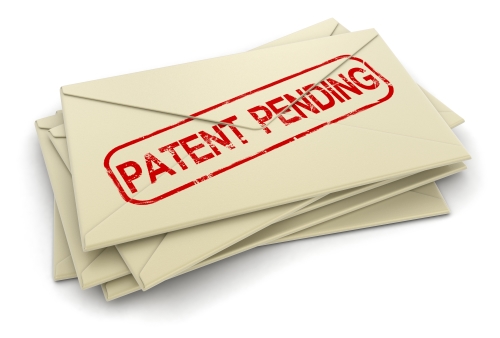“[With] special status, patent applicants will secure patent protection far sooner than regular patent applicants. With patents in hand, patent applicants can more readily perform funding raises and assert their patents against potential infringers.”
 The United States Patent and Trademark Office (USPTO) has a massive backlog of patent applications (typically in the hundreds of thousands). Indeed, the average wait for patent applicants to receive any substantive response from the USPTO is 19.4 months, and the wait is growing. (See chart below). Because of this situation, there has been a need for patent applicants to accelerate the process. The USPTO has obliged and provides several options discussed here for patent applicants to consider.
The United States Patent and Trademark Office (USPTO) has a massive backlog of patent applications (typically in the hundreds of thousands). Indeed, the average wait for patent applicants to receive any substantive response from the USPTO is 19.4 months, and the wait is growing. (See chart below). Because of this situation, there has been a need for patent applicants to accelerate the process. The USPTO has obliged and provides several options discussed here for patent applicants to consider.

Patent Application Process Timelines
Typically, patent applications are first sorted by technology and assigned to technology divisions within the USPTO, called art units. Once assigned to an art unit, applications are taken up on a first-in-first-out (FIFO) arrangement, akin to the queues for amusement park rides. Different art units have different wait times, just like rides. Some art units have waits well above the average 19.4 months (i.e. like popular rides at the amusement park). In fact, historically, the software art units typically experience the longest wait times. Once the patent applicant’s application is taken up for examination, the Examiner issues a Notice, either a Notice of Allowance allowing the patent application, or an Office Action rejecting the patent application. If the latter, the patent applicant must respond within a set time period and overcome the rejections. The Examiner then can again either issue a Notice of Allowance or another Office Action. This process can last up to two years, depending on how protracted prosecution is. The end result is that the time to your patent issuing can easily grow past three years from filing.
Petition to Make Special
The petition to make special quite plainly makes your application special within the USPTO. In particular, the petition to make special grants your application special status, and the USPTO will take it up for examination out of order or out of turn. In other words, this is the USPTO version of taking you to the front of the line at the amusement park. Instead of 19.4 months, you may wait only a couple of months or less. Again, this wait time may vary depending on the art unit.
The Benefits of Achieving an Expedited Patent
The benefits of special status are straightforward. Patent applicants will secure patent protection far sooner than regular patent applicants. With patents in hand, patent applicants can more readily perform funding raises and assert their patents against potential infringers. Moreover, this reduces the time spent in a patent pending status awaiting your patent rights.
Are There Any Other Ways to Gain Special Status?
Yes; the USPTO currently permits applicants to petition for special status in a couple of ways. When any inventor is 65 years of age or older, the USPTO will grant that application special status upon a proper petition.
Also, the USPTO will also grant the application special status when a petition is “accompanied by any evidence showing that the state of health of at least one named inventor is such that at least one named inventor might not be available to assist in the prosecution of the application if it were to run its normal course, such as a doctor’s certificate or other medical certificate.” For example, a terminal illness diagnosis or an admission to an organ transplant waiting list would suffice.
What is Prioritized Examination?
A petition for prioritized examination similarly grants the application special status. Similarly, this application will be taken out of turn for examination. The key difference here is the requirement is simply a substantial fee. For small entities, the filing fee increases to about $3,000, compared to the typical filing fee of $830. In short, using the amusement park analogy, this is the fast pass of the USPTO. Although this program is permanent, the USPTO has set a limit on the number of prioritized examination requests that may be accepted in a fiscal year, which is 15,000.
What is Accelerated Examination?
A petition for accelerated examination grants the application special status. The petition has been around for some time, but it is not very popular due to its ancillary requirements. The petition must be filed concurrently with the application and must include a Statement of Pre-examination Search and an Examination Support Document. The work to generate these documents generally dissuades most applicants from considering this program.
What Is the Climate Change Mitigation Pilot Program?
The USPTO recently announced the Climate Change Mitigation Pilot Program. The program covers non-provisional patent applications related to “technologies that mitigate climate change by reducing greenhouse gas emissions”. Applicants may file a petition to make special for applications meeting the subject matter requirement. This petition to make special will permit the application to be taken out of order, i.e. accessing the express lane of prosecution and avoiding the long wait for first examination. The petition program does not include any special requirements or fees.
What Are the Eligibility Requirements For The Climate Change Mitigation Pilot Program?
The requirements for this petition to make special are:
- Non-provisional patent application
- The subject matter must be related to “technologies that mitigate climate change by reducing greenhouse gas emissions”
- No additional fees due
When Does the Program End?
The Climate Change Mitigation Pilot Program has a sunset provision of (a) the first of 1,000 applications being granted special status, or (b) June 5, 2023. If you have an application pending or soon to be filed with the USPTO in this technology, you should consider filing such a petition promptly.

![[IPWatchdog Logo]](https://ipwatchdog.com/wp-content/themes/IPWatchdog%20-%202023/assets/images/temp/logo-small@2x.png)

![[Advertisement]](https://ipwatchdog.com/wp-content/uploads/2024/04/Artificial-Intelligence-2024-REPLAY-sidebar-700x500-corrected.jpg)
![[Advertisement]](https://ipwatchdog.com/wp-content/uploads/2024/04/UnitedLex-May-2-2024-sidebar-700x500-1.jpg)
![[Advertisement]](https://ipwatchdog.com/wp-content/uploads/2024/04/Patent-Litigation-Masters-2024-sidebar-700x500-1.jpg)

![[Advertisement]](https://ipwatchdog.com/wp-content/uploads/2021/12/WEBINAR-336-x-280-px.png)
![[Advertisement]](https://ipwatchdog.com/wp-content/uploads/2021/12/2021-Patent-Practice-on-Demand-recorded-Feb-2021-336-x-280.jpg)
![[Advertisement]](https://ipwatchdog.com/wp-content/uploads/2021/12/Ad-4-The-Invent-Patent-System™.png)






Join the Discussion
One comment so far.
Julie Burke
June 29, 2022 01:35 pmThank you, Jack, for this article. As a former TC1600 Quality Assurance Specialist, I agree that a petition for expedited examination can help your client’s case chance of being picked up for examination.
Perhaps the increasing pendency phenomenon can be attributed in part to the USPTO’s creation of an “employee” initially and aptly named Holding Docket, now renamed Central Docket, which now holds >250,000 applications (both new and mid-prosecution).
Beginning around 2019, examiners were placed on short dockets- each examiner being fed only a few weeks worth of work at a time. The remainder of their docket – new cases and amended cases – are assigned to Central Docket. If examiners complete their short docket of cases within proscribed time periods set forth in the PAP, they meet the agency’s pendency and docket management goals.
To be clear: the creation of the short dockets makes it appear that the USPTO is better meeting their pendency and docket management goals. The pendency chart Jack included above suggests otherwise.
Much of the pendency bottleneck seen since 2019 seemed to have quietly moved upstream into the Circus called Central Docket.
Let’s take a look under the Big Tent. Consider 15/922,266, filed March 2018 and ready for examination since April 2018. This poor thing can’t get off the carousel ride.
PAIR transaction history shows this application assigned to “an Examiner in GAU” on 4/2018, 6/2019, 9/2020, 10/2020, 7/2021, 10/2021 (thrice) 12/2021, 2/2022, and 3/2022 (four times). The “Examiner” curiously named Central Docket repeatedly assigns the case to his or herself. These misleading docket transactions make it appear that the case is always freshly docketed to an examiner in an art unit. Once this application lands on a real examiner’s desk, and is examined within the time period proscribed by the PAP, that examiner and the agency will have met their goals.
Other examples new cases stuck on the Ferris wheel include 15/764,458 (assigned to Examiner Central Docket >6 times since 2/2019) and 15/741,565 (assigned to Examiner Central docket >5 times since 9/2018.)
One wonders what criteria is being used by Employee Central Docket to select some cases to be promptly docketed to a real art unit for examination while other cases are trapped on the merry-go-round.
Finally, Examiner Central Docket, identified as an employee in Employee Locator, is falsely given the title and the functions of Supervisory Patent Examiner (SPE), a practice exposed here: https://www.theepochtimes.com/us-patent-office-improperly-assigned-supervisory-status-to-contractors-for-years_4267996.html?utm_source=ai&utm_medium=search